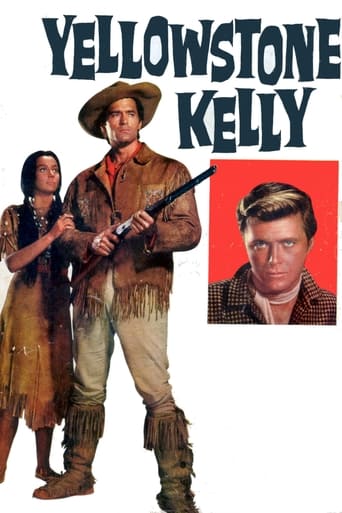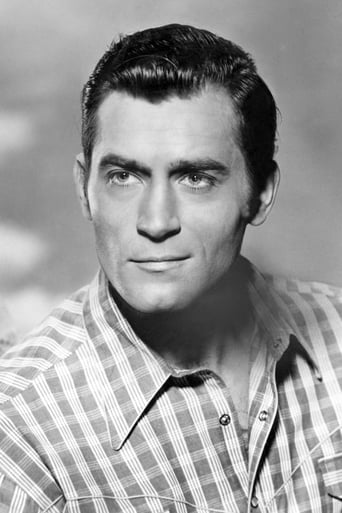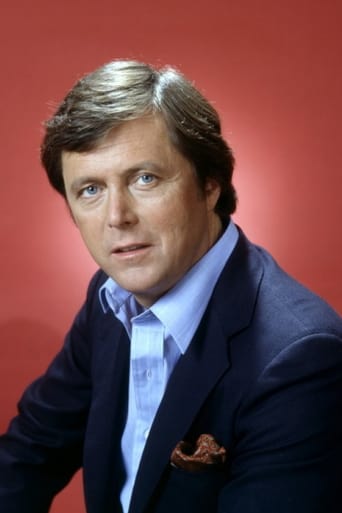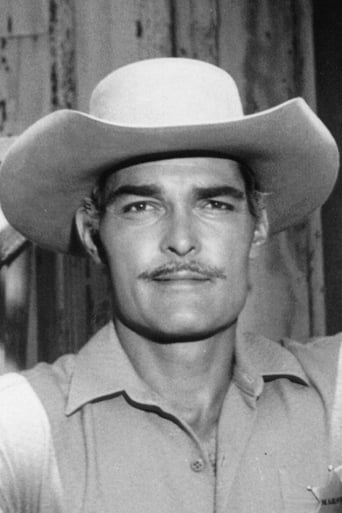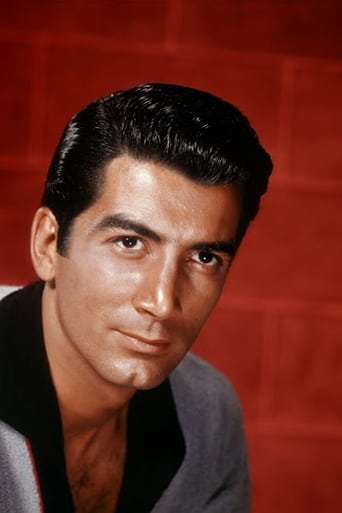Boobirt
Stylish but barely mediocre overall
Borgarkeri
A bit overrated, but still an amazing film
Alistair Olson
After playing with our expectations, this turns out to be a very different sort of film.
Cassandra
Story: It's very simple but honestly that is fine.
Scarecrow-88
A well-reputed fur-trapper, Apache-scout, and frontiersman, Luther "Yellowstone" Kelly, decides to "hire on" a teenaged Anse Harper (teen idol, Edd Byrnes) against his better judgment but grows fond of the boy. Always a loner, Kelly felt (up until he meets Anse, and later Arapaho beauty, Wahleeah (Andra Martin)) he was best on his own, but Anse is a gentle-voiced, non-combative, polite young man who does what he's told to the best of his abilities. Soon, Kelly and Anse run up on the Sioux (led by Gall (John Russell) and his fiery, antagonistic nephew, Sayapi (Ray Danton)), while journeying back to Kelly's cabin (traveling through "the snake" into the "high country" of Montana (where the "springs get quite green")). Saving Gall's "woman", Wahleeah (who wishes to return to her own people), from certain death, Kelly earns brownie points and is allowed to leave (along with Anse). The Calvary (with the likes of Claude Akins and debuting Warren Oates, as well as, Rhodes Reason and Gary Vinson) want to drive out the Sioux by taking an accompaniment of soldiers through "the snake", but Kelly warns against such foolishness. Kelly, though, understands that the White Man will eventually take the land due to strength in numbers.Clint Walker is hired for his screen presence and build (the camera of director Gordon Douglas shoots Walker's Kelly as if he were a towering legend, with the expected close-ups of his non-violent, peace-desiring, conflict-weary face) more than any serious acting chops, but I never felt he wasn't adequate in the part. It isn't like Kelly needed the "method touch" or anything. Edd was probably casted to secure the teen-youth market; he is the moral compass that questions the choice of Kelly to allow Wahleeah to return to the Sioux as she clearly is held by them against her will. Kelly has that dilemma upon him…Wahleeah escapes from the Sioux, stealing one of their ponies in the night, successfully making it to Kelly's cabin. Kelly makes a stance towards Gall regarding Wahleeah; because she's still in bad health due to her past injuries, Kelly refuses to allow Gall to escort her away when Wahleeah is in no shape to travel. Sayapi is the main heavy of the film as the prideful, aggressive, hostile Sioux warrior questioning Gall's judgment and bravery, soon responsible for tragedy involving Anse (who intends to take Wahleeah to her people despite Kelly's orders to keep her in the cabin), earning Kelly's vengeance. Of course, there's the battle at the end (as expected by these kinds of western adventures) where the Sioux engage Kelly and the remaining survivors left of the Calvary with guns firing, dust kicked up, and bodies hitting the ground. "Yellowstone Kelly" is surprisingly violent, with plenty of knife and gun violence, especially when Kelly goes after Sayapi and the Sioux in his company. This wouldn't be complete without fisticuffs so Walker tolerates the heckling of Akins and Oates up to a point until he has no choice but to lay the smack to them (yep, a water trough and window are used to subdue the rude soldiers who mocked Kelly by calling him an Indian; Kelly respects Native American tribes, and he doesn't even make much of a fuss when the soldiers first rib him in a bar, but a stagecoach dust up pushes him too far).The script doesn't actually bang the patriot drum, with some sympathy towards tribes affected by White Man's colonization of their land. Russell, as Gall, follows the lead of many Caucasian actors "dressed in red face" as he carries a "man-of-few-words, pillar of strength" approach to the Sioux leader not to be disrespected and not quick to rush into anything without thinking of the consequences. There's a great scene where Sayapi seems ready to approach Kelly (against Gall's wishes) when Gall grabs him by the throat in a clinch and makes the kid fall to the ground…this tells you that Gall is in charge for a reason. Gall's built for it while Sayapi goes too far and winds up just as he does by film's end. There's something that stayed with me regarding how Kelly tells Gall to take his men and go because the land no longer treats them well…the script has a lot of this (saying that the former occupants of a land that had been there's for ages is taken from them, with White Man telling them to find somewhere else to call home).
dougdoepke
One good thing—WB popped for some scenic Arizona locations, at the same time they didn't stint on extras to flesh out the big battle scene. However, reviewer Dinky is spot-on about the negatives. As a drama, the film is definitely inferior to the underrated Fort Dobbs (1958) that features the same production team. Writer Kennedy, for example, specialized in tight, emotionally complex Westerns, such as the legendary Ranown series with Randolph Scott. Here, however, he has to accommodate a host of WB contract players, including Sunset Strip hipster Edd Byrnes. This results in an over-crowded, over-stretched slice of eye candy that dissipates impact over a series of climaxes.Arguably the movie's most interesting feature is the way the relationship between Kelly (Walker) and Anse (Byrnes) is handled. Now, if the masterly muscular Kelly is added, on one hand, to the submissive pretty-boy Anse, on the other, the sum is two iconic stereotypes of the gay community. Of course, production could have plunked a hat on Byrnes like everyone else and lessened his looks. But that would have outraged fans of the teen idol whose trademark had become a comb. So, the visual earmarks remain. At the same time, the screenplay puts this suggestive two-some into a wilderness cabin for the winter, where the big-hair half does womanly duties like cooking and cleaning, while the macho trapper brings home the bacon. So, together you've got an unmistakable situation for perceptive 50's audiences that putting a woman (Wahleeah) into the mix doesn't erase. Plus, these visual hints are compounded with the homo erotic bed scene that Dinky describes so well. My point is that toying with this taboo could not have been lost on the filmmakers, causing me, at least, to wonder what their reasoning was. After all, the Western is about the most macho of all movie genres. It's worth noting that the movie's overall quality is not affected by this one aspect. In fact, none of this would be worth remarking on if the movie were not from the uptight 1950's, when the topic of same-sex attraction could not even be mentioned, e.g. Cat on a Hot Tin Roof (1958). So in that sense, the film remains something of an oddity for its time. But the movie itself ranks a lot higher on the list of glamorized Westerns than on the list of compelling ones.
pzanardo
Magnificent locations, a pleasant adventure: "Yellowstone Kelly" is a typical nice western movie of the 1950s and, in my personal opinion, it is a relevant instance of a better way of making cinema (better than the current one, I mean).The movie has merits and defects. Among the merits (apart the already quoted beauty of the photography): the fast-pace of the narration; a number of well-elaborated action scenes; the presence of Andra Martin as the Arapaho girl Wahleeah. In fact, beautiful Martin manages to create, with few but skillful touches, a soft erotic atmosphere rather unusual in western movies of that epoch. However, it should be noted that her (splendid) blue eyes are a relevant clumsiness of the movie. Clint Walker, in the role of the trapper Yellowstone Kelly, is a nice guy, though certainly not a great actor. As always in mature 1950's westerns, the war between whites and Indians is provoked by either hot-heads or rogues, in the present case a stupid ambitious cavalry officer: this remark is just intended to contradict the false common-place that in those years Indians were always represented as blood-thirsty savage assassins.The story is placed around the Wyoming-Montana border: however the final part was evidently filmed in the wonderful area of Sedona, Arizona. I'm not able to decide whether this could be considered a defect of the movie: probably not. The worst flaw in the film is the fact that all Sioux perfectly understand and speak English (?). There are several other inaccuracies. For instance: I may be wrong, but I bet that the Blue Soldiers had never been equipped with Winchester carabines.I saw "Yellowstone Kelly" at the theatre, when I was a kid: the pleasant impressions I retained have been confirmed by my recent new view at the TV. I recommend this movie, especially to people nostalgic of good old western flicks.
Nazi_Fighter_David
In 'Yellowstone Kelly,' Clint 'Cheyenne' Walker plays a muscular fur-trapper who prevents war between Indians and U.S. Cavalry, and who survives only to find true love in the arms of a beautiful and talented newcomer Andrea Martin...Becoming a 'squaw man' and a devoted one, Clint Walker goes Western all the way in this standard action film with routine excitements and a cast of TV faces: John Russell as the tall, darkly chief prancing across the plains; Ray Danton as the Indian with conviction and authority; Claude Akins as the heavy tough sergeant; and Warren Oates making his debut as a proud soldier...With the absence of a strong story line in the screenplay, but displaying an outstanding Technicolor photography, 'Yellowstone Kelly' is
